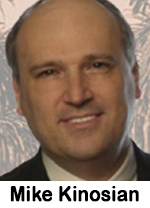 LOS ANGELES – As students, enthusiasts and caretakers of this wonderful medium, we’re keenly aware that radio’s “Golden Age” boasted an incredible array of entertainers and broadcasters.
LOS ANGELES – As students, enthusiasts and caretakers of this wonderful medium, we’re keenly aware that radio’s “Golden Age” boasted an incredible array of entertainers and broadcasters.
With lifestyles, technology and society being what they are today, it’s almost inconceivable to imagine that families would actually gather around the radio and attentively listen – and indeed hang onto – each and every word that emanated from that mysterious entertainment-laden box sitting in the living room.
Fundamentally important back then, of course, was a concept known as “Theater Of The Mind.”
No one embodied and personified it better than one of the bigger-than-life talents of that era: Orson Welles.
Most are familiar with his epic “War Of The Worlds.”
Pictures Set In Songs
The list of other outstanding “Mercury Theater” presentations Welles was responsible for is much too lengthy to cite here, but his legendary “Theater Of The Mind” mystique lived on nightly in Los Angeles, where Jim Ladd was a welcome guest for Southern California listeners dating back to 1969 and hosted a regular show on SiriusXM’s Deep Tracks channel the past 11 years.
Theater Of The Mind so perfectly describes what Ladd tried to do, although it’s not radio drama in the pure sense. “What I [attempt] at night is to show you pictures and do that by playing sets of songs,” the (then) highly popular KLOS-FM, Los Angeles 10:00 pm – 2:00 am personality remarked to me. “If you follow the lyric content of each song, as well as the song’s emotional feel, it should tell you a story with a beginning, middle and end. Thus, it’s theater.”
Throwback To Creativity
In addition to providing his special spin to Theater Of The Mind, Ladd was also responsible for keeping another bit of radio history on life-support.
Most air personalities are required to adhere to strictly enforced music lists, but Ladd’s nightly, four-hour, Los Angeles air-shift was a throwback to the days of “free-form” radio.
The result was similar to what existed in April 1967, when a new phenomenon started taking shape. “That was the beginning of FM and this multi-billion dollar industry,” Ladd recalled. “[Free-form] started on a station [KMPX, San Francisco] where the phone was literally disconnected, because they couldn’t pay the bill. [Tom Donahue] had an idea; he went there and it took off. For a while before deregulation, that’s what all FM radio did in any market. Free-form worked great, until they killed the golden goose.”
Right Place, Right Time
Southern California native Ladd was extremely fortunate to have been able to launch his radio career in the country’s second-largest market. “Part of it was timing,” he admitted. “I was at a little station in Long Beach [KNAC-FM] that decided it was going to try this new, hippie, underground thing. They didn’t know what it was, but [the feeling was to] hire some hippies and see if they could make some money with it. I happened to be right there at that time.”
A frustrated musician, who wanted to be a songwriter, Ladd recounted a life-altering conversation he and a buddy had in a car. “My friend said that I should be in radio. I was 19 or 20 at the time and your friends at that age seldom notice anything but themselves. For some reason, that stuck with me. Thank God, FM was in its infancy and they’d take complete novices like me off the street and give us shows. Owners didn’t know anything about the Grateful Dead or The Who, but we did.”
Check Mate
Instead of walking into a studio and following a computer-generated music log, Ladd was given freedom to use his imagination. His only preparation was what was happening in life.
Resulting sharp, clever music sets he composed weren’t written out in advance. “The way I work is to turn the music up loud and get the song working on me,” he commented. “Once [that happens], it keys in my mind what will fit next.”
Such an intricate process included a mental checklist. “I’ve figured out the lyrics will work, but I need to know how the song I’m playing ends and how the next song begins,” he explained. “If I’m playing a balls-out rocker, I can’t go into some acoustic piece. In that way, it’s really like a chess game. I have to plan these things to start every single segue as I’m doing it. That’s the way that works best for me.”
There were nights, however, that Ladd knew that he “[didn’t] have it,” but as he maintained, “I’ve been doing it long enough to put on a good professional show. Sometimes, I don’t have what I’m striving for, which is to make a connection with the audience. Without having to prompt them or explain anything, my audience lights up the phones. They call because they get what I’m doing. Once that connection is made, then look out, because the rocket is taking off.”
Gracefully Handling The Tragedy
Recalling the horrific September 11, 2001 “Attack On America,” Ladd noted that although it was one of the country’s greatest tragedies, “It was easy to immerse myself into something like that. It so moved me that I had no problem thinking of songs to play or what I wanted to say.”
Judy Collins’ version of “Amazing Grace” was the first song he played when he went on the air that night. “Believe it or not, it set the tone for what I did for … the next two weeks.”
As it usually did, the audience – even or perhaps especially in this painful period – stepped up to the plate. “This is the thing about free-form radio that’s so precious to me,” Ladd emphasized. “Nobody called me on 9/11 with an idiot request. When I played sets of 9/11 songs, everybody was calling in with [appropriate] suggestions. Second only to dealing with the tragedy, the hardest part was to know when I could play groups like AC/DC again. I found that very difficult; you can only feel your way through it.”
Loyal Listeners
In his third tour of duty at (then ABC-owned) classic rocker KLOS, Ladd was a legitimate cult figure in the Southland for his work at legendary cross-town rocker KMET.
Southern California listeners were stunned on Valentine’s Day 1987 when the “The Mighty Met” (now Audacy smooth AC KTWV) – became smooth jazz “The Wave.”
Also on Ladd’s impressive resume were stints at Los Angeles outlets KLSX and KEDG.
The notion of an air personality “connecting” with the audience is both elementary and elusive. Ladd was a rare case of a non-drive time music personality who amassed a loyal, vocal following.
Grateful for such audience allegiance, Ladd didn’t take it for granted. “My audience has been that loyal from KMET to KLOS and all the [other] stations in between. My part of the bargain is that I won’t lie to them or let them down by doing a format. I was off the air twice in my career for two years each. That was very difficult, but because I did that, I’ve earned the right to do this and I think the audience responds to that.”
Offered jobs by stations that wanted the “Jim Ladd” name, he opined, “They didn’t understand what that meant. They thought they could just plug in my name, not let me do what I did and it would be the same thing.”
Your Attention Please
Evenings and nights were Ladd’s domain throughout his career. “I wouldn’t want to do middays or afternoon drive,” pointed out the personality known for his “Lord have mercy” exclamations. “Listening habits are such that you can’t sit and listen like you can at night. People are working, picking up the kids and doing life.”
Much like Welles’ Mercury Theater, Ladd’s show required attention. Otherwise, it was just like playing one song after another, without making that all-important connection. “The audience’s side of the bargain is that they have to bring their attention to the show,” he insisted. “I’ve done [6:00 pm – 10:00 pm] in my career and that worked out very well. The show is a bit different, in that, it’s not quite as eclectic. I don’t know if I’d be playing Judy Collins and Johnny Cash in [that time]; maybe – but maybe not.”
Convinced his free-form style could be utilized elsewhere, Ladd, nevertheless, pondered that to his knowledge, “I’m the Alamo – the last guy standing. That’s certainly the case in a major market. The big tragedy is that there are so many talented [personalities] who, although they wouldn’t do the same show that I do, could do free-form radio. We’re losing all that talent. I’m not the only guy in the world who can do it. I’m the one who was stubborn enough to say that I won’t follow a list – I just won’t do it.”
Powerful Trinity
Among those who influenced Ladd’s on-air style were former MTV personality and ex-KEDG program director J.J. Jackson; veteran Los Angeles air talent Raechel Donahue, who went on to do 7:00 pm -12:00 midnight in Denver at KQMT “The Mountain”; longtime KMET personality the late B. Mitchel Reed; KMET’s Pat Kelley; Cynthia Fox; Jack Snyder; and the late, underrated Mary Turner. “The wonderful, beautiful part of free-form radio – and most importantly – at KMET was that it wasn’t about being a star,” Ladd asserted. “What we were doing was our part of the ‘social revolution’ at the time. It was like a triad: The people on the street, the music, and us. We took the message of Dr. [Martin Luther] King and combined it with the music of Bob Dylan.”
One highly significant aspect in noting those former KMET staffers was that they’d each listen to everyone else’s show and it elevated their own game. “I’d hear Cynthia do a great segue, or Mary would do a great segment and that would inspire me,” Ladd enthused. “What I miss most is that kind of camaraderie – it’s just me now. I can’t tune in to hear someone else’s great segue. When I heard one of my colleagues do something that touched me, the first thing I wanted to do was to call them and tell them it was great. The second thing was that – from their subject matter – I got 15 different ideas to use when I got to work that night. That was the beauty of it.”
Role Model
National audiences became aware of the iconic Los Angeles talent through shows such as “Innerview,” “Headsets,” and “Jim Ladd’s Living Room.”
Considerably more than someone who voiced a script for a syndicated show, Ladd spent a great deal of time scrutinizing the fine art of interviewing. “I ripped off just about everything I know about interviewing people from Elliot Mintz,” he confided to me. “Elliott was my role model. He’d interview the Shah of Iran one week and John Lennon & Yoko Ono the following week. He’d talk with everyone in a warm, low-key and intelligent manner. It was completely unlike anything [else] I’d heard at the time and that really impressed me.”
The “Innerview” show had an 11-year run and was carried by 160 stations. “It was the first of its kind,” boasted Ladd, whose other syndication work involved voiceovers for an overseas television show. “I’m very proud of the work we did [on ‘Innerview’]. I did 99% of the interviews in the front room of my house in an artistic community in Laurel Canyon. People would immediately be put in a very comfortable place. It’s not a studio – it’s my home.”
The Work Is The Key
Another reason why people felt at ease was that, instead of focusing on a person’s life, Ladd addressed their work. “They loved that. Rather than talking about how many girls they had, what kind of drugs they did and life backstage, I studied every word of every lyric of the new album they wanted to talk about and grilled them about their songs on the environment. It would require six to eight hours of preparation. Then there was another 20 – 25 hours to write the one-hour show; it was a lot of work.”
Writing became such a worthwhile experience that, in 1991, he penned “Radio Waves: Life And Revolution On The FM Dial.”
As a result of these syndicated projects, this immensely respected rock personality diversified himself; the book became a big hit. “I guess I’m a radio guy who learned how to become a writer,” Ladd mused. “In order to get up enough courage to write my book, I read authors I like. I was required to do a great deal of writing for ‘Innerview’ and would write out what I’d say – which is something I never do [on my live show]. You’d also end up with two hours of tape and pick out what the person was going to say, how I was going to introduce it and what song would follow it.”
A Distant Second
Whenever anyone asked Ladd to name his favorite band, he qualified his answer by separating the Beatles.
The quartet, he stressed, had to be placed in a completely different category.
After that’s been done, he named the Doors as his favorite.
The same applied to his most memorable radio experiences, with KMET being the Beatles’ equivalent. “We were at the right place at the right time with the right people. We loved each other and there’s never been anything else like it.”
Nonetheless, he quickly stated that his favorite time is the next time he was able to sit behind a microphone. “The reason for that is [KLOS’-then program director] Rita Wilde,” he proclaimed. “I don’t know how I got so lucky to have a boss who was [such a great on-air personality] and so supportive. If it weren’t for Rita Wilde, I wouldn’t be on the air – that’s just a fact. I want to keep free-form radio alive for the audience, but I also owe her to make this happen. She’s under a lot of pressure [when it comes to my show]. When I go in at 10:00 pm, the format literally stops. I can’t think of another boss in the world who would understand that.”
Numbers Game
His multi-decade Los Angeles track record and loyal following notwithstanding, Ladd still realized that ratings played a role in dictating his employment; however, as he declared, “Rita is one of the first people I’ve ever worked for in this business I trust when she says the numbers are up or down. Sometimes in my career I’ve found out from people who didn’t work at the station that my show was doing great. When there’s a down book, [management is usually] right there.”
Ultimate People Skills
Certain managers and programmers, he claimed, kept good books a secret from him; however, “Rita calls immediately when I have an up book. If I have a down book, I don’t hear from her; I have to call her. That says volumes to me. We’ll deal with a problem, but she doesn’t want to get me upset. She might tell me that I’m playing too much of this or not enough of that, but she never says anything [threatening]. It’s always from a helpful and suggestive [stance]. When the numbers are good, she leaves me totally alone. From my perspective, you can’t ask for more than that. Her people skills are unbelievable.”
In addition to have wanted to keep free-form radio alive as long as possible, Ladd disclosed that he wanted “to walk away before I can no longer do my job. I don’t know when it will happen, but the next stage in my life will probably be to write fulltime – I’m working on it.”
Contact TALKERS Managing Editor Mike Kinosian at Mike.Kinosian@gmail.com
Share this with your network
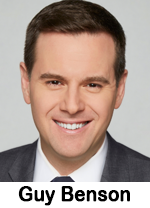 includes two FOX News Radio personalities. “The Guy Benson Show” will air from 12:00-3:00 pm and “FOX Across America with Jimmy Failla” is being delay
includes two FOX News Radio personalities. “The Guy Benson Show” will air from 12:00-3:00 pm and “FOX Across America with Jimmy Failla” is being delay 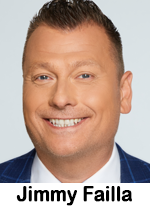 broadcast in the 12:00 midnight to 3:00 am daypart. KTTH program director Jason Antebi states, “We’re incredibly excited to add Guy Benson’s fresh conservative perspective to our primetime lineup. Guy’s political acumen, ability to break down complex issues in ways making it easy to follow, and his pulse on what’s happening from Washington state to Washington, DC will be a huge asset for the KTTH audience.” Benson is the political editor of Townhall.com and a FOX News contributor.
broadcast in the 12:00 midnight to 3:00 am daypart. KTTH program director Jason Antebi states, “We’re incredibly excited to add Guy Benson’s fresh conservative perspective to our primetime lineup. Guy’s political acumen, ability to break down complex issues in ways making it easy to follow, and his pulse on what’s happening from Washington state to Washington, DC will be a huge asset for the KTTH audience.” Benson is the political editor of Townhall.com and a FOX News contributor. 


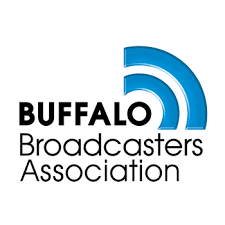 The Buffalo Broadcasters Association (BBA) has announced this year’s Broadcasting Hall of Fame inductees;
The Buffalo Broadcasters Association (BBA) has announced this year’s Broadcasting Hall of Fame inductees; 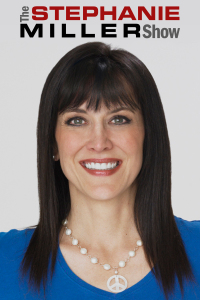
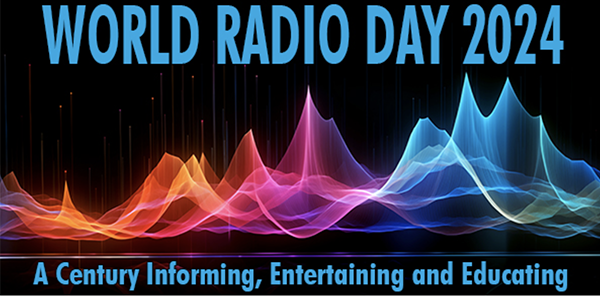
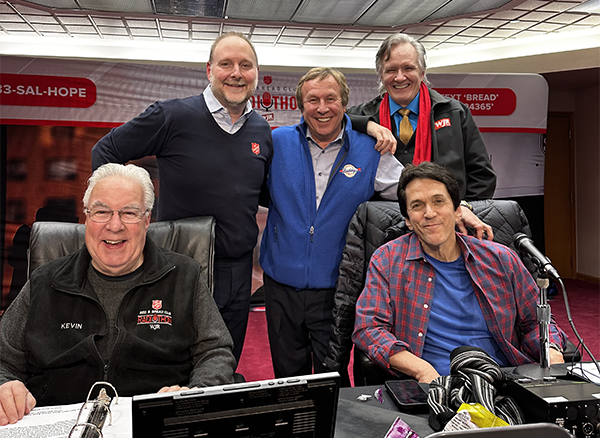
 Moshos. Moshos died on January 11 and today (2/14) would have been his 67th birthday. General manager Joel Oxley says, “George helped me so much when I first started at WTOP 30 some odd years ago. I knew little about production and he let me know it. His gruff demeanor and direct style took a minute to get used to. But it didn’t take long for me to realize this guy with the glint in his eyes was a person who cared. Really cared. About his job and doing it right and more importantly about people. He touched so, so many people and made things better for them. Seems only right to name where he spent so much of his time ‘The George Moshos Production Studio.’”
Moshos. Moshos died on January 11 and today (2/14) would have been his 67th birthday. General manager Joel Oxley says, “George helped me so much when I first started at WTOP 30 some odd years ago. I knew little about production and he let me know it. His gruff demeanor and direct style took a minute to get used to. But it didn’t take long for me to realize this guy with the glint in his eyes was a person who cared. Really cared. About his job and doing it right and more importantly about people. He touched so, so many people and made things better for them. Seems only right to name where he spent so much of his time ‘The George Moshos Production Studio.’”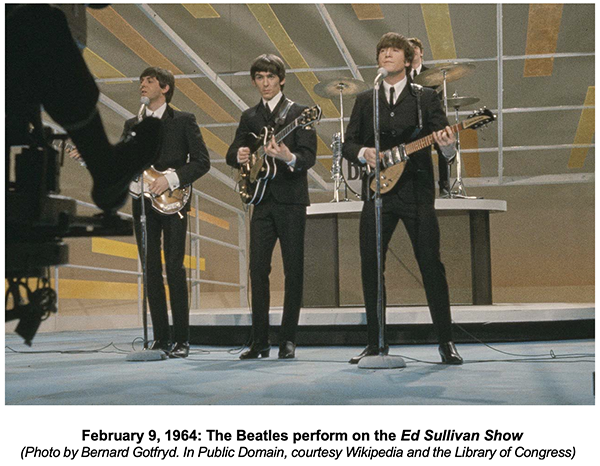
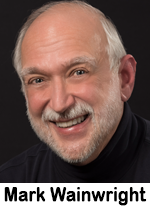 In early December 1963, America was a very gloomy place. The assassination of President John F. Kennedy on November 22 brought the country to a virtual standstill for four days, and the emotional and psychological hangover lingered for weeks. The nation needed a dose of uplifting energy and fun, and the Beatles were the ideal remedy.
In early December 1963, America was a very gloomy place. The assassination of President John F. Kennedy on November 22 brought the country to a virtual standstill for four days, and the emotional and psychological hangover lingered for weeks. The nation needed a dose of uplifting energy and fun, and the Beatles were the ideal remedy.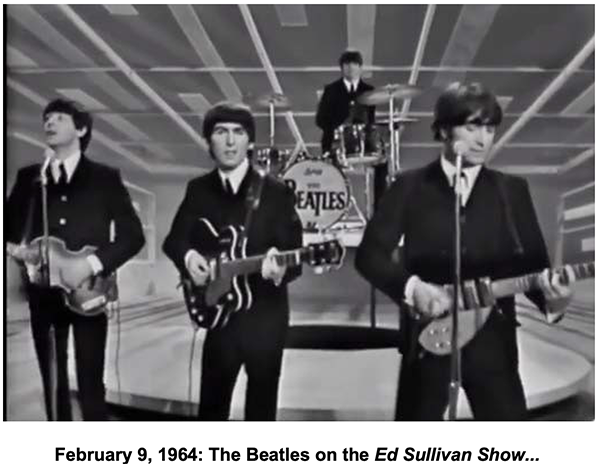
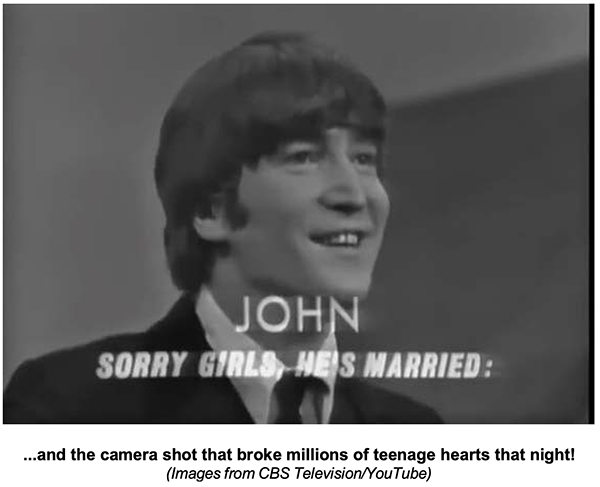
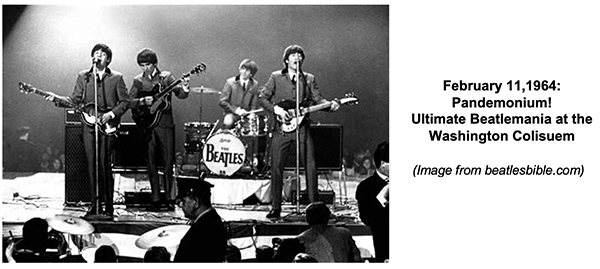
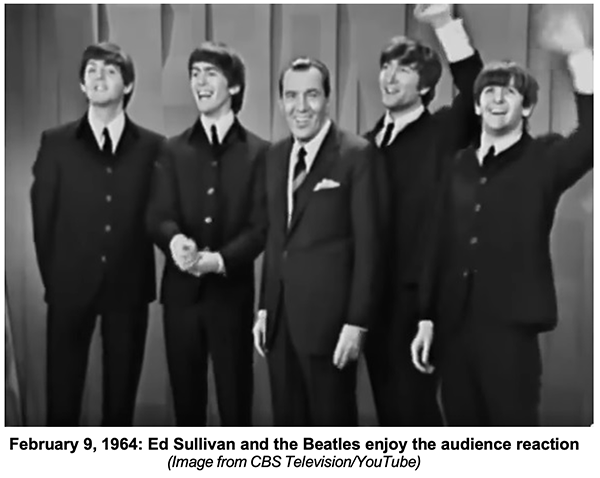
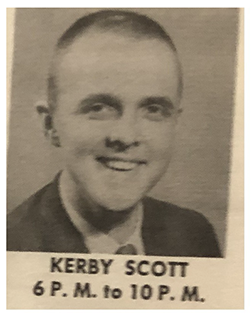 1964 WCAO Promotional Material: “Kerby Scott photo
1964 WCAO Promotional Material: “Kerby Scott photo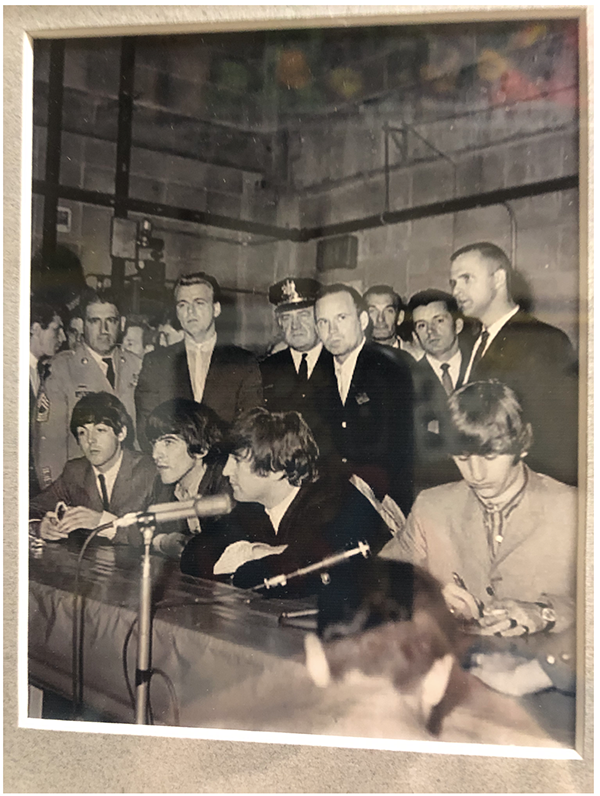
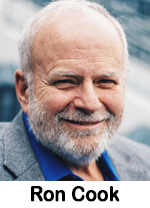 its inception in 2010. Cook told his listeners, “It’s been a blast with you guys.” Cook is also a sportswriter for the Pittsburgh Post-Gazette. He’ll leave that position after his last column appears on Sunday. Audacy Pittsburgh SVP and market manager Michael Spacciapolli comments, “From the first day ‘93.7 The Fan’ signed on the air, Ron brought instant credibility to the station with, not only with reputation as one of the top columnists in the market, but also a trusted voice that sports fans wanted to hear from. That is a rare combination, and to this day we are fortunate that Ron was here with us from the beginning.”
its inception in 2010. Cook told his listeners, “It’s been a blast with you guys.” Cook is also a sportswriter for the Pittsburgh Post-Gazette. He’ll leave that position after his last column appears on Sunday. Audacy Pittsburgh SVP and market manager Michael Spacciapolli comments, “From the first day ‘93.7 The Fan’ signed on the air, Ron brought instant credibility to the station with, not only with reputation as one of the top columnists in the market, but also a trusted voice that sports fans wanted to hear from. That is a rare combination, and to this day we are fortunate that Ron was here with us from the beginning.” 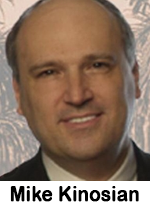 Despite his seemingly nonchalant, bad boy on-air persona, David Letterman is exceptionally respectful of broadcasting and its history.
Despite his seemingly nonchalant, bad boy on-air persona, David Letterman is exceptionally respectful of broadcasting and its history.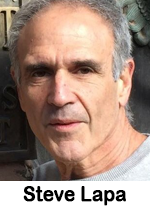 This column should really be called, “How I got transferred from Buffalo to Tampa.” The storyline will help explain the title and offer you a proven technique that should help you sell and earn more.
This column should really be called, “How I got transferred from Buffalo to Tampa.” The storyline will help explain the title and offer you a proven technique that should help you sell and earn more.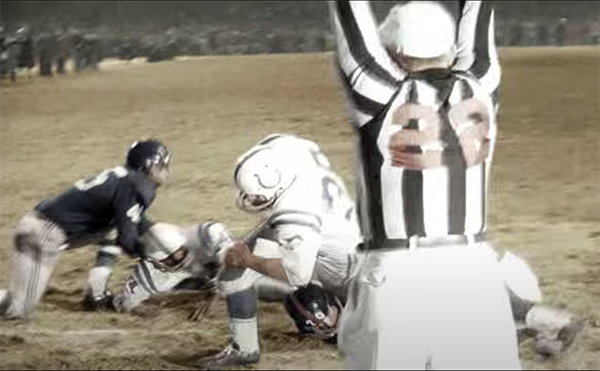
 It was one of those indelible moments in sports history: The 1958 NFL Championship, played on December 28, 1958 at Yankee Stadium in New York. The Baltimore Colts defeated the New York Giants 23-17 in sudden death overtime. 65 years later, the events of that Sunday afternoon still resonate throughout pro sports and sports media.
It was one of those indelible moments in sports history: The 1958 NFL Championship, played on December 28, 1958 at Yankee Stadium in New York. The Baltimore Colts defeated the New York Giants 23-17 in sudden death overtime. 65 years later, the events of that Sunday afternoon still resonate throughout pro sports and sports media.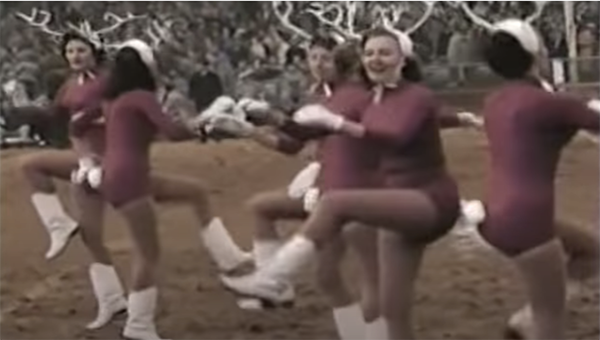
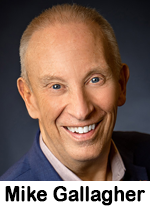 and help people instead of just jawboning and complaining about everything.’ And she was right. So ‘Gallagher’s Heroes – The Fallen Officers Fund’ was created (which assists the families of law enforcement killed in the line of duty and publishes The First Responders Bible) as well as several other charities we help on an annual basis. Each holiday season we partner with Prison Fellowship and get Christmas presents, Bibles and a personalized message from an incarcerated parent delivered to thousands of children. So far this year, my audience has donated over $160,000 which will benefit 6,400 children of prisoners. Over the last few years, my listeners have contributed over $2.5 million to Prison Fellowship. I’m so humbled and blessed to have such a loving, generous audience. It makes it a joy to come to work. And I get to carry my late wife’s wish in my heart. I’m a lucky guy.” Gallagher is not the only SRN host helping the Prison Fellowship cause. Sebastian Gorka is also working hard to promote the organization’s efforts.
and help people instead of just jawboning and complaining about everything.’ And she was right. So ‘Gallagher’s Heroes – The Fallen Officers Fund’ was created (which assists the families of law enforcement killed in the line of duty and publishes The First Responders Bible) as well as several other charities we help on an annual basis. Each holiday season we partner with Prison Fellowship and get Christmas presents, Bibles and a personalized message from an incarcerated parent delivered to thousands of children. So far this year, my audience has donated over $160,000 which will benefit 6,400 children of prisoners. Over the last few years, my listeners have contributed over $2.5 million to Prison Fellowship. I’m so humbled and blessed to have such a loving, generous audience. It makes it a joy to come to work. And I get to carry my late wife’s wish in my heart. I’m a lucky guy.” Gallagher is not the only SRN host helping the Prison Fellowship cause. Sebastian Gorka is also working hard to promote the organization’s efforts.  LOS ANGELES – As students, enthusiasts and caretakers of this wonderful medium, we’re keenly aware that radio’s “Golden Age” boasted an incredible array of entertainers and broadcasters.
LOS ANGELES – As students, enthusiasts and caretakers of this wonderful medium, we’re keenly aware that radio’s “Golden Age” boasted an incredible array of entertainers and broadcasters.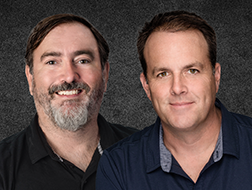 midday slot. Hardy has also lent his voice and creative talents to various platforms across the station, including the creation of the wildly popular ‘Fuppets’ videos for Felger & Mazz. In addition, he has been the longtime host of the ‘Sports Hub Golf Club’ show and can also be heard on Beasley’s Rock 92.9.” Morning host Fred Toucher says, “I’ve known Hardy and admired his talent for many years. I’m very excited to begin this new chapter and feel revitalized by the new opportunity.” Hardy comments, “As a lifelong radio guy, I’m thrilled for this opportunity. I’m looking forward to working with Fred and the rest of the morning show crew on what I believe will be a great show.” Station PD Rick Radzik states, “Hardy is one of the most talented and creative individuals I have ever worked with in radio. Teaming him with Fred was just a natural fit for our new morning show. I look forward to them providing great content and entertaining our listeners for years to come.”
midday slot. Hardy has also lent his voice and creative talents to various platforms across the station, including the creation of the wildly popular ‘Fuppets’ videos for Felger & Mazz. In addition, he has been the longtime host of the ‘Sports Hub Golf Club’ show and can also be heard on Beasley’s Rock 92.9.” Morning host Fred Toucher says, “I’ve known Hardy and admired his talent for many years. I’m very excited to begin this new chapter and feel revitalized by the new opportunity.” Hardy comments, “As a lifelong radio guy, I’m thrilled for this opportunity. I’m looking forward to working with Fred and the rest of the morning show crew on what I believe will be a great show.” Station PD Rick Radzik states, “Hardy is one of the most talented and creative individuals I have ever worked with in radio. Teaming him with Fred was just a natural fit for our new morning show. I look forward to them providing great content and entertaining our listeners for years to come.”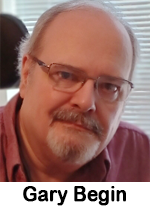 You know the routine.
You know the routine.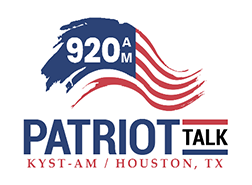 The lineup includes Westwood One talk hosts Dan Bongino, Chris Plante and Rich Valdes; Starnes Media Group’s Todd Starnes; FOX News Radio’s Guy Benson, Newsmax’s Rob Carson, and longtime Pittsburgh TV and radio personality Wendy Bell. It will also use FOX News Radio for network news. Hispanic Broadcasting president Matthew Velasquez says, “We’re excited to bring Houston listeners a better choice in news/talk radio. The mission of ‘Patriot Talk 920 AM’ is to become the leader in conservative talk radio with programming that reflects our core values of family, faith and freedom.” For more information, contact Steve Lapa at
The lineup includes Westwood One talk hosts Dan Bongino, Chris Plante and Rich Valdes; Starnes Media Group’s Todd Starnes; FOX News Radio’s Guy Benson, Newsmax’s Rob Carson, and longtime Pittsburgh TV and radio personality Wendy Bell. It will also use FOX News Radio for network news. Hispanic Broadcasting president Matthew Velasquez says, “We’re excited to bring Houston listeners a better choice in news/talk radio. The mission of ‘Patriot Talk 920 AM’ is to become the leader in conservative talk radio with programming that reflects our core values of family, faith and freedom.” For more information, contact Steve Lapa at 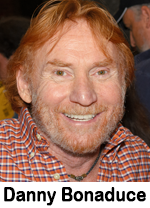 during its time as an FM talk station. KZOK says in its announcement of Bonaduce’s retirement, “Danny’s career in the limelight began at an early age, starting with appearances on ‘Bewitched’ in 1969 that landed him the role of Danny Partridge on the ‘Partridge Show’ from 1970 to 1974. Later, Danny would appear in Corvette Summer with Mark Hamill and many cameo appearances on TV and movies over the years.” He says, “I am the luckiest guy in entertainment. I joined the actors union at age three and with little interruption, I have worked in the industry I love for 60 years. I loved almost every minute of it. I want to thank the loyal fans who have followed me throughout my career, including the last 12 based in Seattle. Thank you to iHeartRadio for believing in me, to my on-air partner Sarah for putting up with me. My thanks to Paul Anderson, my agent for decades who has been my steady guide and business partner.”
during its time as an FM talk station. KZOK says in its announcement of Bonaduce’s retirement, “Danny’s career in the limelight began at an early age, starting with appearances on ‘Bewitched’ in 1969 that landed him the role of Danny Partridge on the ‘Partridge Show’ from 1970 to 1974. Later, Danny would appear in Corvette Summer with Mark Hamill and many cameo appearances on TV and movies over the years.” He says, “I am the luckiest guy in entertainment. I joined the actors union at age three and with little interruption, I have worked in the industry I love for 60 years. I loved almost every minute of it. I want to thank the loyal fans who have followed me throughout my career, including the last 12 based in Seattle. Thank you to iHeartRadio for believing in me, to my on-air partner Sarah for putting up with me. My thanks to Paul Anderson, my agent for decades who has been my steady guide and business partner.”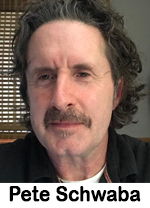 Waukesha. The “Nite Lite With Pete Schwaba” airs from 8:00 pm to 10:00 pm. Schwaba has hosted programs for PBS Wisconsin in addition to his work in the film industry that includes writing for the 2003 film, A Guy Thing, and his own indie comedy film, The Godfather of Green Bay. He also served as a producer on the Jeff Foxworthy TV show, “Are You Smarter Than a Fifth Grader?” He says, “Entertainment, just like sports, helps bring people together, which is more important now than ever. I’m excited to introduce listeners to people I’ve met over the years in the entertainment business, share experiences, and generally celebrate arts and culture in Wisconsin.”
Waukesha. The “Nite Lite With Pete Schwaba” airs from 8:00 pm to 10:00 pm. Schwaba has hosted programs for PBS Wisconsin in addition to his work in the film industry that includes writing for the 2003 film, A Guy Thing, and his own indie comedy film, The Godfather of Green Bay. He also served as a producer on the Jeff Foxworthy TV show, “Are You Smarter Than a Fifth Grader?” He says, “Entertainment, just like sports, helps bring people together, which is more important now than ever. I’m excited to introduce listeners to people I’ve met over the years in the entertainment business, share experiences, and generally celebrate arts and culture in Wisconsin.” 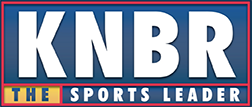 McCaffrey has been co-host of the “Murph and Mac” show with Brian Murphy, who appears to still be employed with the station. The dismissal of Santangelo spells the end of the evening call-in show that’s been part of the station for the past 51 years. Station program director Adam Copeland– who also co-hosts the afternoon show with Tom Tolbert – said on the program, “It’s been a really difficult day. I love this building, I love this station, I love working with you, Tom, and I’ve listened to you for years. I love a lot of people. I love the guys we let go of today. I’m looking forward to the future, but I really think we need to tip our cap and applaud the work that those guys have done.”
McCaffrey has been co-host of the “Murph and Mac” show with Brian Murphy, who appears to still be employed with the station. The dismissal of Santangelo spells the end of the evening call-in show that’s been part of the station for the past 51 years. Station program director Adam Copeland– who also co-hosts the afternoon show with Tom Tolbert – said on the program, “It’s been a really difficult day. I love this building, I love this station, I love working with you, Tom, and I’ve listened to you for years. I love a lot of people. I love the guys we let go of today. I’m looking forward to the future, but I really think we need to tip our cap and applaud the work that those guys have done.”